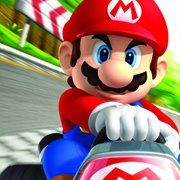Nintendo at 125: our gaming expert reflects

September 3, 2014
Ask a parent, or anyone over the age of 50, to name one character from a video game. Was the answer “Mario?”
Whether you saved the princess as Jumpman in “Donkey Kong” at the arcade in 1981, picked up the Master Sword in “The Legend of Zelda” on the Nintendo Entertainment System in 1986, began a journey into the wonderful world of “Pokémon” on a Game Boy in 1996 or just dived into “Nintendo Land” on the Wii U in 2012, chances are, you’ve had some encounters with Nintendo products.
Counterintuitively, Nintendo — arguably the most successful game and gaming hardware company — turns 125 years old this month. Of course, video games were a bit scarcer in 1889, but Nintendo initially offered one of video gaming’s important predecessors: card games. Similar to U.S. playing cards, Nintendo Koppai, as it was called at the time, marketed handmade cards for the game Hanafuda, which it continues to support.
Now, Nintendo is best known by its major brands — “Mario,” “Donkey Kong” and “Zelda” — whose characters and worlds owe everything to artist and developer Shigeru Miyamoto. In recent history, Nintendo’s focus seems to be on belittling Miyamoto’s characters into baby versions of themselves and, additionally, into tennis stars, Olympic athletes and baseball sluggers. Nintendo produces en masse, slapping its recognizable names on mediocre games, while expecting to profit by selling to ignorant families — a business model that serves them well.
“Mario Kart,” the gem of my youth and my favorite racing game, is now on its eighth installment on the Wii U. “Mario Party 10” is currently in development. “Super Mario Bros.” has 18 individual titles in its line. “Super Smash Bros.,” an immensely popular fighting game among college students, will drop its fourth iteration on the Wii U and 3DS handheld this year.
It sounds absolutely senseless and ridiculous that there are so many Nintendo games swirling around on the shelves, but it’s a numbers game and part of why the company’s characters are so recognizable. They’re nonthreatening, nonviolent and kid-friendly in a medium of entertainment constantly pushing the boundaries of what’s appropriate. Nintendo has had 125 years to get its planning in line, whereas comparable tycoons Sony and Microsoft — founded in 1946 and 1975, respectively — clearly had different goals in mind.
Longevity becomes a big concern in games. Like in the movies, there are only so many times the audience is willing to tolerate the same thing. This summer, my friends and I sat and argued about which “Mario Party” title we wanted to play. Some opted for “2,” but the outspoken consensus was “3.” Confused, I considered this debate and said, “Does it even matter?” The only “Mario Party” I truly liked and remembered was the first.
Apparently, there are enough small improvements in each new version to inspire repeat customers. Mario’s mission will always be to reclaim Princess Peach from Bowser, and Star Fox is always going to save the Lylat System, but each of these slight alterations bring with them the same cast of lovable, cartoony and memorable characters.
When it comes time to play “Mario Party” or “Mario Kart 64” a little older and in a different state of mind than I used to be, I adamantly refuse to play as any character but Yoshi. That silly green dinosaur is my avatar, the extension of myself in the Nintendo universe, and, regardless of the game played, I have to be him. (The only exception to this rule is “Super Smash Bros.”)
Yoshi resulted from a strong attachment built up over time. I’m faithful to Yoshi, despite the introduction of Birdo — his pink, female counterpart — and the horrendously uncool baby versions of Mario, Luigi, Toad, Bowser, et al. I don’t want to be Yoshi so much because I identify as a green, anthropomorphic dinosaur. Instead, Yoshi resonates with me because he’s a loyal and trustworthy sidekick to the heroic Italian plumber. That’s something to aspire to.
Without doling out too much time on redefining its brand (re: 18 “Super Mario Bros.” games), Nintendo’s capable of expanding on what it knows and redoing the best parts. In the next few months, they’ll be releasing “Hyrule Warriors,” a “Zelda” spinoff that combines the beloved characters of that franchise with Koei Tecmo’s “Dynasty Warriors” series (a beat-’em-up, hack-and-slash action brawl) and “Pokémon Omega Ruby” and “Alpha Sapphire,” remakes of the 2003 originals, “Ruby” and “Sapphire.” Finally, there’s the new “Super Smash Bros.” game, which will undoubtedly ignite many late-night, heated battle royales in the dorms.
Inevitably, Nintendo’s made some less-than-stellar games, but, as its audience ages, it can bring families, spouses and children into the open world of Super Mario or to wield sword and shield to protect Hyrule from the Ganondorf. Better yet, the number of college-aged students who still play “Pokémon” would cause many parents to faint. As if anyone could actually grow out of it.







